
Las Almunias de Rodellar

Pictures: iii.2000, 03.i.2012


Pictures: iii.2000, 03.i.2012
| Molino harinero | Central eléctrica | Molino aceitero |

The situation has changed dramatically since then. At the time of our second visit (2) the mill was hidden behind tall trees and a lush vegetation of shrubs, and currently (time of writing is xii.2022) the construction is barely to discern on the most recent aerial photos. To enter we had to find our way through a thick vegetation of thorns and brambles.
Often protective symbols are placed around the entrance of a mill (e.g. Abellada, Ara, Las Bellostas), including here were we have an engraving of a calvary (6) with a simple cross above it.
From the door a couple of steps (8 right) lead down into the workshop.
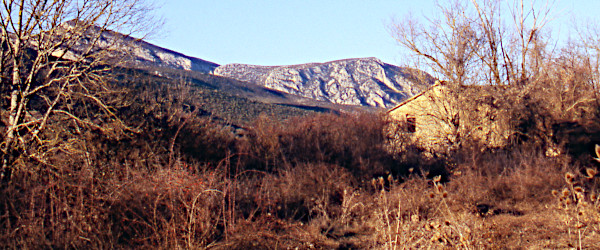
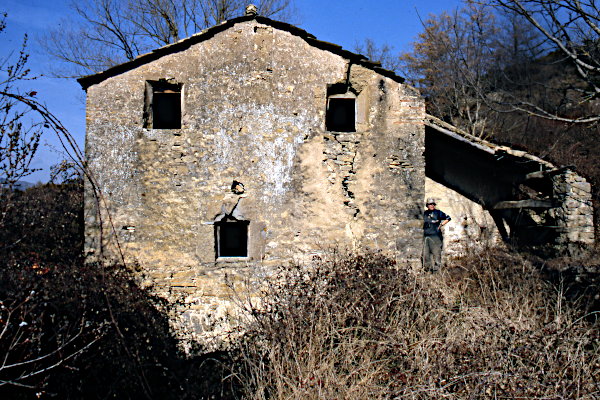
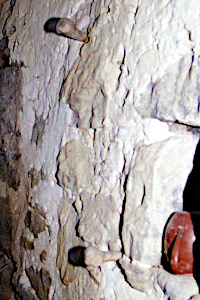
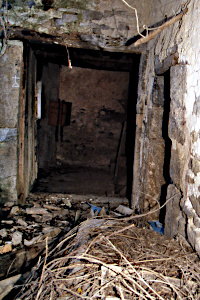

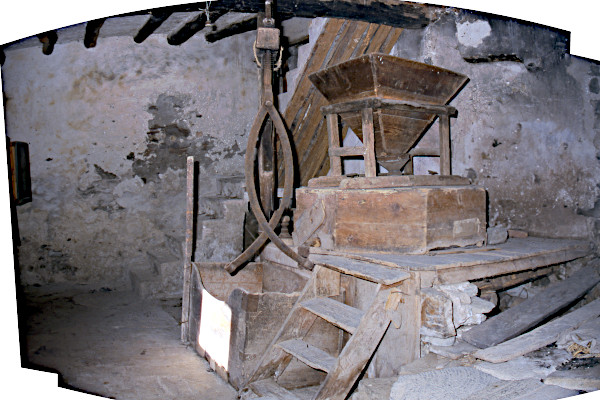
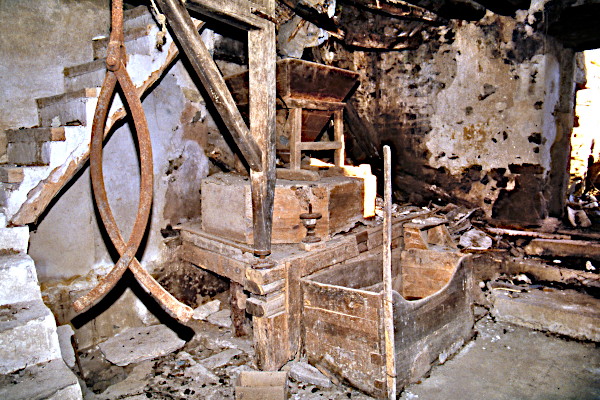
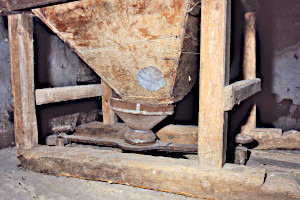
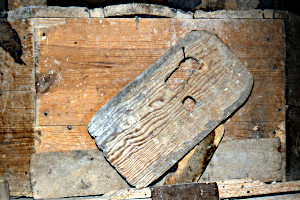
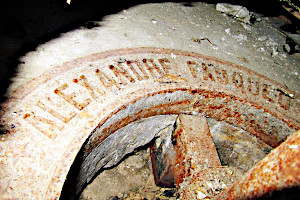

affable, benevolent, pious, and also
temperate, soft, gentle, mild, and may be the name of a person or a saint (though I am not aware of any Benignus related to mills or millers).
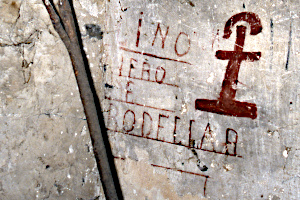
The left half of the text is hidden by a more recently built wall perpendicular to it, maybe to create a separation between the mill and the power station. In 2012 the text had disappeared together with the crumbling plaster.
| Molino harinero | Central eléctrica | Molino aceitero |